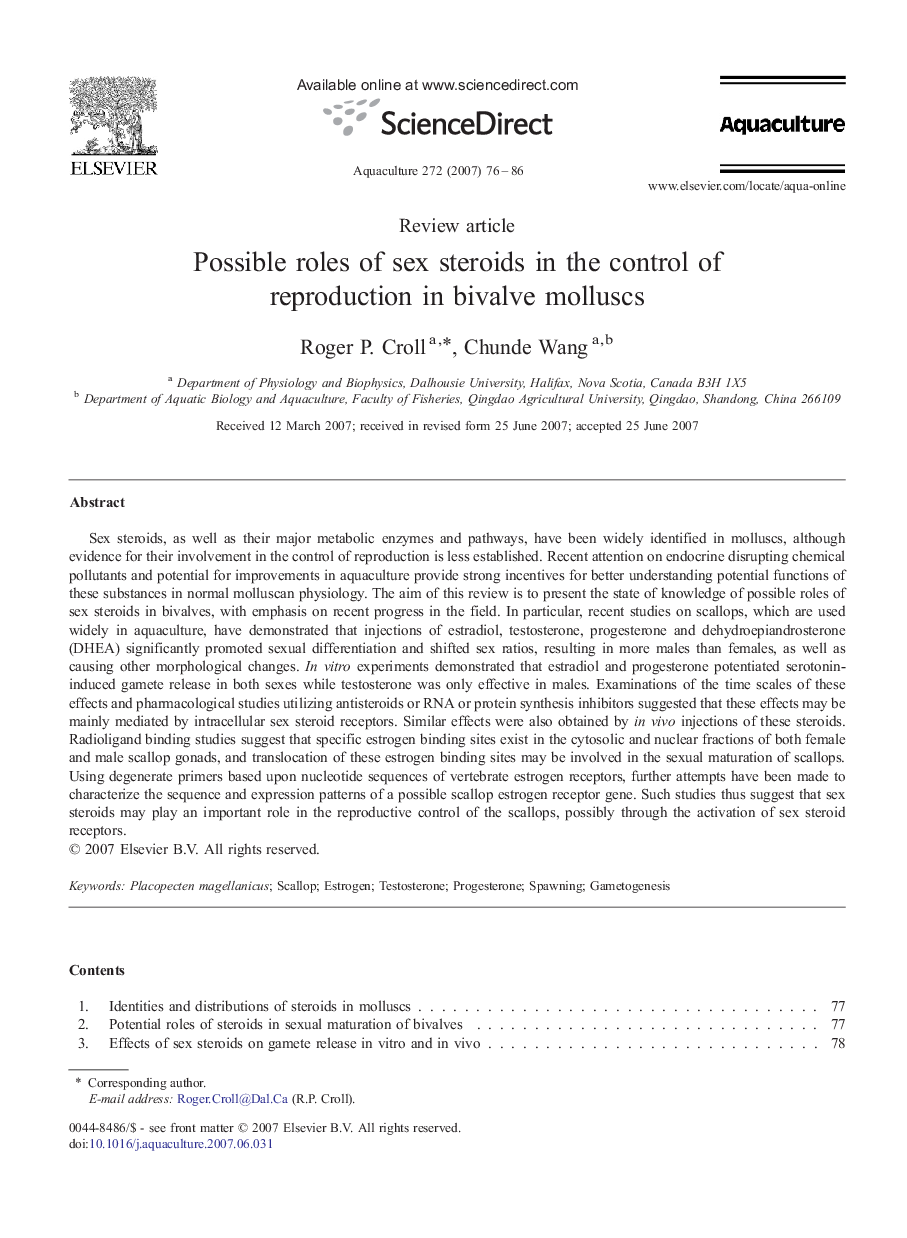| کد مقاله | کد نشریه | سال انتشار | مقاله انگلیسی | نسخه تمام متن |
|---|---|---|---|---|
| 8496432 | 1552970 | 2007 | 11 صفحه PDF | دانلود رایگان |
عنوان انگلیسی مقاله ISI
Possible roles of sex steroids in the control of reproduction in bivalve molluscs
دانلود مقاله + سفارش ترجمه
دانلود مقاله ISI انگلیسی
رایگان برای ایرانیان
کلمات کلیدی
موضوعات مرتبط
علوم زیستی و بیوفناوری
علوم کشاورزی و بیولوژیک
علوم آبزیان
پیش نمایش صفحه اول مقاله

چکیده انگلیسی
Sex steroids, as well as their major metabolic enzymes and pathways, have been widely identified in molluscs, although evidence for their involvement in the control of reproduction is less established. Recent attention on endocrine disrupting chemical pollutants and potential for improvements in aquaculture provide strong incentives for better understanding potential functions of these substances in normal molluscan physiology. The aim of this review is to present the state of knowledge of possible roles of sex steroids in bivalves, with emphasis on recent progress in the field. In particular, recent studies on scallops, which are used widely in aquaculture, have demonstrated that injections of estradiol, testosterone, progesterone and dehydroepiandrosterone (DHEA) significantly promoted sexual differentiation and shifted sex ratios, resulting in more males than females, as well as causing other morphological changes. In vitro experiments demonstrated that estradiol and progesterone potentiated serotonin-induced gamete release in both sexes while testosterone was only effective in males. Examinations of the time scales of these effects and pharmacological studies utilizing antisteroids or RNA or protein synthesis inhibitors suggested that these effects may be mainly mediated by intracellular sex steroid receptors. Similar effects were also obtained by in vivo injections of these steroids. Radioligand binding studies suggest that specific estrogen binding sites exist in the cytosolic and nuclear fractions of both female and male scallop gonads, and translocation of these estrogen binding sites may be involved in the sexual maturation of scallops. Using degenerate primers based upon nucleotide sequences of vertebrate estrogen receptors, further attempts have been made to characterize the sequence and expression patterns of a possible scallop estrogen receptor gene. Such studies thus suggest that sex steroids may play an important role in the reproductive control of the scallops, possibly through the activation of sex steroid receptors.
ناشر
Database: Elsevier - ScienceDirect (ساینس دایرکت)
Journal: Aquaculture - Volume 272, Issues 1â4, 26 November 2007, Pages 76-86
Journal: Aquaculture - Volume 272, Issues 1â4, 26 November 2007, Pages 76-86
نویسندگان
Roger P. Croll, Chunde Wang,